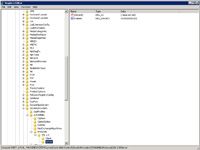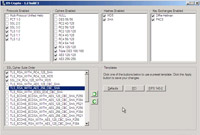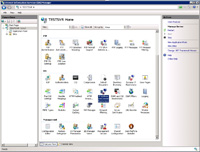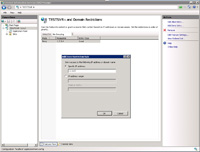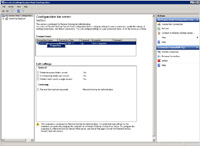
(Enlarge)
|
- RDP on a server allows you to logon to it as if you were physically sitting at the server (or interacting with the server through the console tab of VMWare).
- RDP is much more secure than what it has been, by default, in past years.
- To begin with, open the Remote Session Host Configuration on the server, right-click the connection and select properties.
|
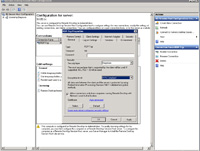
(Enlarge)
|
- Select "FIPS Compliant" for encryption level and check "Allow connections only from computers running Remote Desktop with Network Level Authentication".
- PCI Compliance: If the server needs to be PCI compliant, RDP cannot run in "FIPS Compliant" mode because RDP uses TLS 1.0 (as of 2012) - instead "High" would need to be selected along with "Allow connections only from computers running Remote Desktop with Network Level Authentication" - OR - if the server is running in as a VM, you could leave RDP disabled. If you were to leave the setting "FIPS Compliant" and locked down the server (cipher suites, etc) you would not be able to RDP to the server.
|
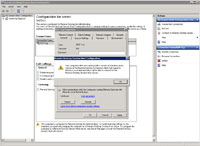
(Enlarge)
|
- Depending on what computers/servers you may have on your network, they may or may not be able to support network level authentication. Click "OK".
- OPTIONAL: Depending on what you have configured for RDP (aka terminal services) you may need to conserve server resources by booting off RDP users who are inactive for an extended period of time. The steps below show how set this up:
- Right-click the Connection (usually called "RDP-Tcp") and select Properties.
- On the Sessions tab, check "Override user settings" and select something like 3 hours for "End a disconnected session".
- Under the following section for "Idle session limit" select something like 3 hours. Check "Override user settings" and "Disconnect from session".
|
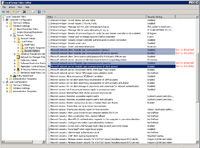
(Enlarge)
|
- Now you'll need to change the security options for the policy governing the server.
- Set the four policies as shown in red.
|
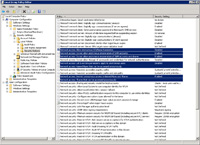
(Enlarge)
|
- While you've got the policies open, there are a few other settings for Network Access to check as shown.
- OPTIONAL: You may also wish to set-up an "are you authorized" message that all RDP users would see when connecting to the server as detailed below:
- Under the policy "Interactive logon: Message title for users attempting to log on" set the value to "IT IS AN OFFENSE TO CONTINUE WITHOUT PROPER AUTHORIZATION"
- Under the policy "Interactive logon: Message text for users attempting to log on" set the value to "This system is restricted to authorized users only."
|
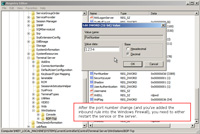
(Enlarge)
|
- The next thing that may be beneficial is to change the port that RDP operates from (instead of the default port). For this example, let's say the port would be 1234. When someone would RDP they would RDP to the server like servername:1234. See this Microsoft note.
- To change the port, open the registry editor and go to: HKEY_LOCAL_MACHINE\SYSTEM\CurrentControlSet\Control\TerminalServer\WinStations\RDP-Tcp
- Locate "PortNumber", select decimal and enter the port number you would like to use (be sure the port number is not being used by another process).
- In Windows Firewall you may want to copy the existing in-bound RDP rule for port 3389. Then modify the copy. Test the in-bound rule for your unique port number (such as RDP'ing with a different RDP session using the unique port number). Once it is operational, the original RDP in-bound rule could be disabled.
|
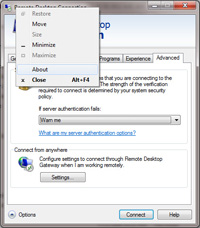
(Enlarge)
|
- How do you find out what a client system may support for RDP? There are a few ways and this shows you how to find out what version of RDP is on a client system by logging into that system and typing "mstsc" at the Start -> Run prompt.
- Once open, right-click on the top left icon and select "About".
|
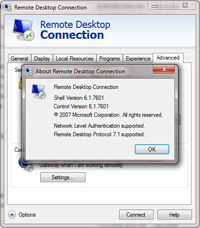
(Enlarge)
|
- The pane that shows up will show you various information regarding the RDP client and if it supports network authentication.
|
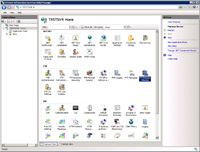
(Enlarge)
|
- It is common practice to NOT have FTP enabled under the same domain name as your web site. Instead it is better to either setup a separate domain name or subdomain that allows FTP only and resolves to the physical directory where the website files are located.
- Even while that will help some with security, more still needs to be done to help secure FTP. Some of the settings that are shown are quite restrictive, but they are applied at the server level. This means that if something is too restrictive for a particular website, you can override the setting at the specific website level.
- To begin, select "FTP Request Filtering" under the section "FTP".
|
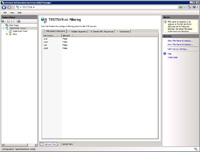
(Enlarge)
|
- Under the tab "File Name Extensions" file extensions to block from upload/download include .exe, .com, .bat, .cmd.
|
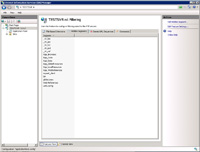
(Enlarge)
|
- Under the tab "Hidden Segments" either folder or files can be blocked such as:
-
_vti_bin
_vti_rpc
_vti_txt
_vti_pvt
_vti_cnf
App_Browsers
App_Code
App_Data
App_GlobalResources
App_LocalResources
App_WebReferences
aspnet_client
bin
global.asax
Web References
web.config
|
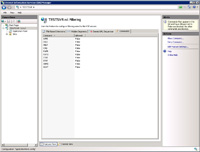
(Enlarge)
|
- Under the tab "Commands" actual FTP commands can be blocked (some commands can be used to get information about the server) such as: APPE, DELE, HELP, RMD, RNFR, RNTO, STAT, SYST, XRMD, ADAT.
|
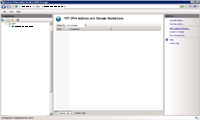
(Enlarge)
|
- At the site level where the FTP is going to be used at, you may want to block all FTP access to IP addresses/domains that should not have access. This makes it possible to continue to block tools which utilize a range of IP addresses with which to try to guess FTP credentials and gain access.
- The first step is to open "FTP IPv4 Address and Domain Restrictions" and click on "Edit Feature Settings".
|
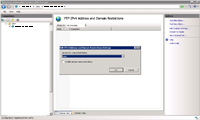
(Enlarge)
|
- From the pane that appears select "Deny" for "Access for unspecified clients" and click OK.
|
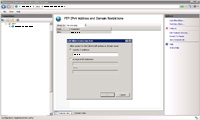
(Enlarge)
|
- At this point nobody will be able to login via FTP including yourself.
- Add 127.0.0.1 so that you can perform local FTP activities (for testing, etc). And then add the IP address(s) of other FTP clients who should be able to FTP.
- To do this, open "FTP IPv4 Address and Domain Restrictions", click "Add Allow Entry".
- From here you can add a range of IP addresses or a single IP address at a time to allow.
|
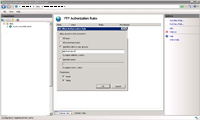
(Enlarge)
|
- Under FTP authorization rules you can define who (local users or users in your Active Directory) whom can FTP.
- If you need an administrative person to be able to FTP, do not use a local FTP user like "administrator" or various combinations thereof. Instead, try to at least specify a user group such as administrators (of the server) so only those in that group would have read/write access.
|
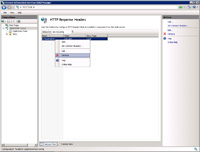
(Enlarge)
|
- Blocking some of the header information from being sent to a client (along with a webpage, for instance) can be done by removing the X-Powered-By header. While this is helpful, scan tools can still determine the server type by observing other characteristics such as the webpage links in pages, .Net form tags, etc.
|
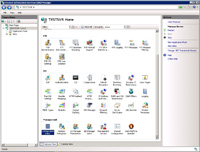
(Enlarge)
|
- The configuration file for a server (which goes down to websites) can also be modified to exclude some information regarding the server.
|
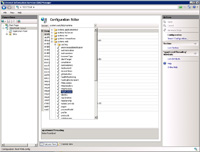
(Enlarge)
|
- This section shows how to get to the httpRuntime to perform some alteration on.
|
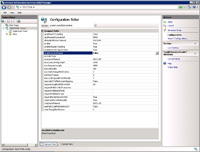
(Enlarge)
|
- Select "False" for the section labeled "enableVersionHeader".
|
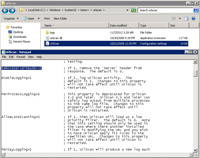
(Enlarge)
|
- Another header that you can prevent from being returned in a response is referred to as "Server:" which normally has a value of Microsoft/IIS... The easiest way to prevent this header from being returned is via urlScan2.0+ (most likely you have it already installed if you are serious about security).
- All you need to do is locate the urlscan ini file and set the "RemoveServerHeader" value to 1. That's it!
|
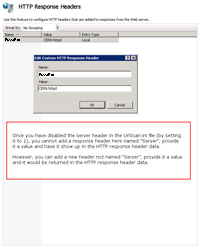
(Enlarge)
|
- Once you are preventing "Server:" from being returned, you cannot declare another "Server:" at the server level (in IIS) and provide a different value.
- However, you can create a different name/value pair as shown which would be returned in the response data.
|
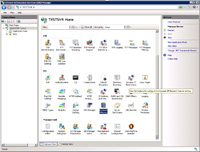
(Enlarge)
|
- The request filtering section contains a number of tabs (which I'll go through here). Various scan tools will attempt a variety of methods to try to discover weaknesses with a website. This shows some of the ways to eliminate weakness detection.
- At the server level, under "IIS", open the section "Request Filtering".
|
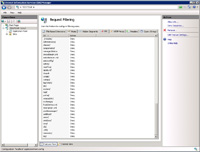
(Enlarge)
|
- The "URL" tab allows you to automatically block requests to a website by filtering what is in the URL (after the domain name). Some scans will attempt to inject code into the URL itself or simply request folders of web applications which have been discovered to have had vulnerabilities at some point in time. You don't necessarily need to check for everything possible since you can scale down to what applies to your website/server. Here are a few URL injections that could be blocked:
-
NOTE: These may change over time to include new entries so this is by no means a complete, always updated list.
about:blank
_vti_bin
"http
mailto:
url(data:image
concat(
convert(
char(
/http:
no-text
server[
authenticate/
servlet/
+CSCOE+
~/
cgi-bin/
_vti_rpc
webalizer/
SProtectLinux/
snoopservlet/
global.asa
etc/passwd
.htaccess
boot.ini
.%252e/
cmd.exe
.password
.show
.pwd
.jsp
.signature
.var
.htpasswd
admin-serv/
util/
wwwroot/
++++++++++
.......
etc/hosts
<script>
%3Cscript%3e
config.php
php.ini
soapdocs/
phpnuke/
_vti_txt
_vti_pvt
level/
modules/
phpBB/
postnuke/
cpanel/
wwwboard/
../../
etc/shadow
tradecli.dll
ows-bin/
_vti_cnf
_private
proxy/
config.inc
phpinfo.php
_admin/
config[
=http:
include/
[path]
_includes/
administrator/
classes/
components/
manager/status
crossdomain.xml
autodiscover.xml
autoconfig/
admin/
msoffice/
labels.rdf
drupal-
usage/
xampp/
iisprotect/
jsp/
system/
mail/
portal/
wsusadmin/
exchange/
RootDevice.xml
description.xml
profilemanager/
webhost/
winnt/
windows/
ows/
old/
.ssh/
mswsmtp/
inc/
_vti_inf
_vti_aut
www-data/
root/
ftp/
backup/
server-status
|.php
~.php
includes/
upgrade.php
phpversion
install.php
phpinfo
changelog
/UNION/
/SELECT/
/AND/
ws_ftp.ini
rpc/
?\
owa_util
plugins/
|
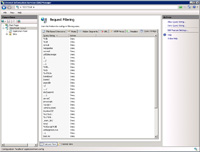
(Enlarge)
|
- The "Query Strings" tab allows you to automatically block requests to a website by filtering what is in a query string (that is, www.yoursite.com/?querystringdata).
- If you don't handle any query string data anywhere in a website (pages, scripts, etc) then you may not need to be too worried about filtering query strings. Below contain some of the query string data that you may consider blocking:
-
NOTE: These may change over time to include new entries so this is by no means a complete, always updated list.
%3b
%3d
concat
netsparker
convert
url(data:image
.|.
.../
...\
%80..
%c0.
%c0%2e
/windows/
/winnt/
arg=/dir
~/
..../
etc/passwd
....\
server[
javascript:
<script>
<IMG%20SRC
/system32/
%c1%c1..
%c1%9c..
_mem_bin/
sys:/
%3Cscript%3E
webappmon.exe
..\
boot.ini
%2F..
../
pingto=
<script>
[script]
script|
function%20
=http://
80040e14
[ODBC_SQL_Server_Driver]
[SQL_Server]
CONFIG[
='
%27+and+%27
%22+and+%22
%27+or+%27
0x31303235343830303536
+union+all+
select+
%60information_schema
group+by+
PHPB8B5F2A0-3C92-11d3-A3A9-4C7B08C10000
PHPE9568F34-D428-11d2-A769-00AA001ACF42
PHPE9568F35-D428-11d2-A769-00AA001ACF42
PHPE9568F36-D428-11d2-A769-00AA001ACF42
="
%2A%2A5%2A(
%21--
ping+-
bin/cat
usr/sbin
echo+'
print+'
Response.Write(
sleep(
BENCHMARK(
%25n
/)
%5E(%23
https://
ftp://
=phpinfo
UNION%20ALL
%27%29%22
%29%20AND%20
SELECT%20%28CASE
SELECT%20GENERATE_SERIES
%2CDROP%20FUNCTION
%2CDROP%20TABLE
%2CDROP%20DATABASE
SELECT%20UPPER%28
GET_HOST_ADDRESS
DUTL_INADDR
DCTXSYS.DRITHSX
SELECT%20COUNT
Either_BOF_or_EOF
404_Object_Not_Found
spool/mail
die()
echo%20%60
|
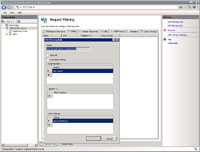
(Enlarge)
|
- The "Rules" tab allows you to setup a variety of rules. The rule that I'll focus on here is being able to block requests made with specific user-agents. A User-agent is the identification part of a request that is sent to the website/server for handling. An example user-agent could include firefox, safari, or something else such as a software application name or even code.
- You an create a filtering rule to block requests based on the user-agent. An example is shown here where I'm adding to the rule to block all user-agent requests with "Gecko/20100101" in the user-agent string.
- When a request is blocked a 403 (Forbidden) message is returned to the client.
- Some user-agents that are associated to scan tools include nessus, nikto, sqlmap, w3ap, and many others. Remember, however, while adding known user-agents to this section will cut-down on the use of scan tools, it will only do so for those running scan tools which do not know how to alter the user-agent string.
|
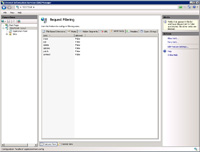
(Enlarge)
|
- The "HTTP Verbs" tab allows you to block or allow requests that are made based on the verb sent with a request. An example http verb is www.yoursite.com/ GET, where GET is the verb. GET and POST are the most common verbs that are allowed. However, others, used less frequently may not be allowable (depending on what you've got setup).
- Some of the less commonly used verbs include TRACE, PUT, DELETE, OPTIONS, PATCH, CONNECT.
|
